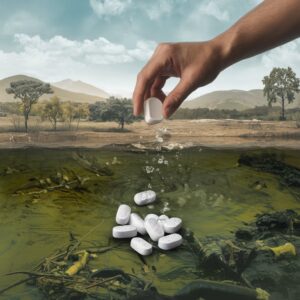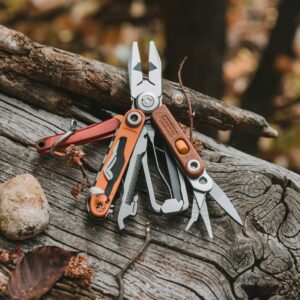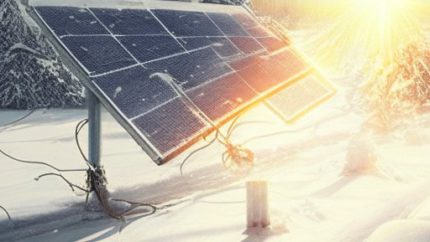Build Your Ultimate Survival Pack: Must-Have Items for Emergency Preparedness
When water flows freely from a tap, it’s easy to overlook its significance. However, in a survival scenario, access to clean water becomes paramount. Water is the lifeline in emergencies, distinguishing between survival and peril. Without sufficient hydration, the human body begins to fail quickly, leading to dire consequences. Unfortunately, not all sources of water are safe; this is a prevalent misconception. Natural water bodies like streams, rivers, and lakes may appear pristine, but they can harbor dangerous microorganisms, bacteria, and viruses that could cause severe dehydration, gastrointestinal distress, or even worse health issues.
Finding potable water can be incredibly challenging in remote wilderness areas or following natural disasters. This is where water purification tablets come into play, serving as a critical resource in your survival kit. These compact tablets are powerful and designed to eliminate harmful pathogens from contaminated water, ensuring it’s safe for consumption. Essentially, they act as the unsung heroes of your emergency supplies, providing peace of mind in uncertain situations.
Including a supply of water purification tablets in your emergency kit can significantly enhance your chances of survival. However, it's essential to understand the proper usage techniques to maximize their effectiveness. Following the manufacturer’s instructions precisely is crucial. Generally, the procedure involves adding the recommended number of tablets based on the water volume, waiting for the designated time—typically 30 minutes or longer—and only then consuming the treated water.
It’s important to note that cold or turbid water may require additional steps before purification. Pre-filtering the water through a cloth or an old coffee filter can help remove larger particles, ensuring more effective disinfection with the tablets. Brands such as Katadyn, Aquatabs, and Potable Aqua are well-regarded for their reliability and effectiveness, having been rigorously tested in various conditions.

Essential Insights for Survival Preparedness
- Access to clean water is vital for survival, making water purification tablets a crucial component of any survival pack.
- Follow the instructions carefully to ensure that water purification tablets effectively make contaminated water safe for drinking.
- Consider reputable brands like Aquatabs or Potable Aqua for reliable water purification solutions in your survival kit.
- Emergency blankets are essential for regulating body temperature and can prevent hypothermia during survival situations.
- Different types of emergency blankets, including Mylar and wool, serve specific purposes and have distinct storage requirements in your survival supplies.
- Proper storage and usage of an emergency blanket can enhance its effectiveness in keeping you warm and dry during emergencies.
- Fire is crucial for warmth, cooking, and signaling for help during survival scenarios.
- Essential fire-starting tools include waterproof matches, lighters, and fire starters that work effectively in various weather conditions.
- Mastering fire-building techniques is necessary to create and maintain a fire in any survival situation.
- A multi-tool is a versatile device useful for numerous tasks in a survival pack, including cutting, opening, and repairing equipment.
- Look for essential features in a multi-tool, such as knives, pliers, and screwdrivers, to enhance its functionality during emergencies.
- A multi-tool can assist with tasks like cutting rope, opening cans, and repairing gear when you need it most.
- Basic first aid knowledge is crucial for treating injuries and illnesses in survival situations.
- A well-stocked first aid kit should include bandages, antiseptic wipes, and pain relievers to address common injuries effectively.
- Understanding how to use the items in a first aid kit properly can provide immediate care in emergency situations.
 Emergency Blanket: Your Lifesaving Asset
Emergency Blanket: Your Lifesaving Asset
An emergency blanket, often referred to as a thermal or space blanket, serves as a compact, portable shield against the cold, especially in survival situations where warmth is crucial. These blankets are made from highly reflective materials resembling metallic foil, designed to reflect your body heat back to you. They can mean the difference between life and hypothermia during harsh weather conditions, keeping you warm and safe.
Beyond merely providing warmth, these blankets serve multiple functions by protecting against moisture and wind—two critical factors that can quickly deplete your body heat. Maintaining warmth is essential, as it is vital to preserve core body temperature and prevent hypothermia. Including one of these blankets in your survival pack can provide a layer of security during unpredictable outdoor circumstances.
Emergency blankets come in various designs, each tailored to specific needs. The most prevalent type is made from Mylar, a lightweight and highly reflective material that has long been a staple in survival kits. Some advanced versions offer additional features like insulation, waterproofing, and grommets, allowing them to serve as tarps or shelters in emergencies.
When packing an emergency blanket, it’s crucial to store it carefully. Although compact and lightweight, these blankets can tear easily if not handled properly, which can be frustrating when you need them the most. Understanding how to utilize the blanket effectively is essential; sometimes, this means wrapping it snugly around yourself, while other times, it may be beneficial to lay it beneath you to insulate against cold ground.
The Importance of a Reliable Firestarter in Survival Kits
Fire—a fundamental element in survival, is more than just a flickering flame; it represents warmth against the chill, the method of transforming questionable food into safe meals, and a beacon of light in dark times. In a survival scenario, fire is not merely an element; it’s a source of comfort and a vital tool for survival—much like having a companion when everything else seems bleak.
However, starting a fire is often more challenging than one might anticipate, especially when faced with adverse weather conditions. Imagine attempting to ignite a fire amidst pouring rain or with the wind howling around you. A dependable fire starter is not just a luxury; it’s a necessity. You need a reliable tool in your kit that can facilitate fire-making, regardless of the elements working against you.
The variety of fire starters available is vast, each with its unique characteristics. Waterproof matches are straightforward, reliable, and easy to store, while lighters are convenient but may fail in cold conditions or when the fuel is depleted. For more rugged situations, consider tools like magnesium bars or flint-and-steel kits, which can ignite sparks even in damp conditions. However, these require practice to master; knowing how to use your fire starter under pressure is crucial. Additionally, understanding how to construct a fire that burns brightly through the night requires knowledge of dry tinder, strategic log placement, and ensuring proper airflow.
 Multi-tool: Your Versatile Companion in Survival Situations
Multi-tool: Your Versatile Companion in Survival Situations
A multi-tool is arguably one of the most practical items you can include in a survival kit. Imagine a compact gadget that houses a variety of tools in one convenient package. Most multi-tools combine pliers, blades, screwdrivers, scissors, and other essential implements that can be lifesavers in critical moments. Instead of carrying individual tools, you have an all-in-one solution that’s perfect for adventurers and those preparing for unforeseen circumstances.
The versatility of a multi-tool is astounding; it allows you to transition seamlessly from constructing a makeshift shelter to slicing food or making repairs on the fly. This adaptability is invaluable in survival situations where quick thinking is essential. Therefore, when selecting a multi-tool, pay attention to the features it offers. Opt for high-quality stainless steel for the blades, as it ensures longevity and resistance to rust.
Safety should also be a priority; look for locking mechanisms that provide stability when using the tool, and consider ergonomics, as comfort is especially important if you utilize the tool for extended periods. Some multi-tools even include additional features like can openers or wire cutters, which can be incredibly useful in specific scenarios. Practically speaking, these tools are invaluable for cutting rope, tightening loose screws on gear, or even preparing food if you’re fortunate enough to catch something during your outdoor adventures.
Ultimately, the multi-tool could very well be the most valuable asset in any survival kit.
First Aid Kit: Essential Supplies for Emergency Medical Care
In any survival situation, having access to a well-stocked first aid kit is vital for treating injuries and preventing serious complications. Injuries can occur unexpectedly, whether from cuts sustained while building a shelter or sprains incurred while navigating tricky terrain. A comprehensive first aid kit can significantly aid in addressing these incidents effectively. Being prepared with essential first aid knowledge and the necessary supplies allows you to manage minor injuries immediately, reducing the risk of worsening your condition by trying to seek help without adequate care.
Being thoroughly prepared not only boosts morale in challenging times but also increases the likelihood of a swift recovery. Your survival kit should contain a basic first aid kit equipped to handle common injuries and illnesses. This kit should include various crucial items. Bandages of different sizes are essential for covering wounds, while antiseptic wipes are ideal for cleaning injuries before dressing them, effectively preventing infections.
Additional supplies such as adhesive tape, gauze pads, tweezers to extract splinters, and pain relief medications like ibuprofen are necessary for comprehensive care. Scissors can also be helpful for cutting bandages or clothing as needed. Understanding how to utilize these tools effectively in an emergency is crucial; knowing how to clean wounds properly and apply pressure to stop bleeding can make all the difference. With this knowledge, you’ll feel more equipped to handle emergencies.
To maintain preparedness, it’s wise to regularly check your first aid kit to ensure all materials are available, in good condition, and have not expired. Keeping your supplies up to date will enhance your readiness for any situation.
Frequently Asked Questions about Survival Packs
What constitutes a survival pack?
A survival pack is a curated collection of essential items and supplies designed to assist individuals in surviving emergencies, whether they arise from natural disasters, outdoor adventures, or unexpected circumstances.
Which essential items should be included in a survival pack?
Key items that should be part of a survival pack include potable water, non-perishable food supplies, a comprehensive first aid kit, a multi-tool, a reliable flashlight, a fire starter, a whistle, a map and compass, a space blanket, and personal hygiene products.
How much water should I pack for survival?
It is recommended to include at least one gallon of water per person per day in your survival pack. This water should be stored in a durable container and replaced regularly to maintain freshness.
What types of food are best for a survival pack?
Opt for non-perishable food items such as energy bars, canned goods, dried fruits, nuts, and jerky in your survival pack. Choose foods that are high in calories and nutrients to effectively sustain energy levels during emergencies.
Why is a first aid kit critical for a survival pack?
A first aid kit is essential in a survival pack as it contains vital medical supplies necessary for treating injuries and illnesses that may arise during emergencies. It can help prevent infections, manage bleeding, and provide temporary relief until professional medical assistance is available.
What is the best way to store and maintain a survival pack?
Store your survival pack in a cool, dry location and conduct regular checks to ensure all items are in good condition and have not expired. It is essential to replace any expired items and update the contents based on changing needs and circumstances.
References for Further Reading
P&G Portable Water Purifier Packets Review. https://preppingsurvival.com/pg-portable-water-purifier-packets-review/
Prepping in the UK: A Guide. https://startprepping.co.uk/uk-preppers-guide/
The Article Why an Emergency Kit Is Crucial Appeared First On Survival Avenue.
Emergency Water Sources: Essential Tips for Survival
Comprehensive Guide to Emergency Water Sources What Constitutes Emergency Water Sources? Emergency Water Sources: Emergency water sources are vital for survival during unexpected crises, significantly influencing one's ability to access safe hydration when regular supplies become unavailable. These sources may be natural, such as rivers, streams, and springs, or stored, such as bottled water. The primary […]
SHTF Security Measures: Key Strategies for Preparedness
Essential Guidelines for Effective SHTF Security Measures Deepening Your Understanding of Key Security Concepts SHTF Security Measures: To implement successful SHTF security measures, a comprehensive understanding of foundational concepts is crucial. This includes proactive planning, resource management, and risk assessment. In times of uncertainty, the capacity to foresee and react to potential threats becomes vital. By adopting […]
Emergency Sleeping Bags: Essential for Outdoor Emergencies
Comprehensive Guide to Emergency Sleeping Bags Exploring the Essential Features of Emergency Sleeping Bags Emergency Sleeping Bags: These bags are invaluable resources designed to provide vital warmth and protection during unforeseen events. These bags are usually made from lightweight, waterproof materials, providing excellent insulation while safeguarding users from harsh weather. Their innovative design frequently includes […]
Post-Disaster Bartering: Essential Strategies
Exploring the Concept of Post-Disaster Bartering What Is the Concept of Post-Disaster Bartering? Post-Disaster Bartering: Post-disaster bartering refers to the exchange of goods and services that occurs when conventional currency systems collapse due to catastrophic events, such as natural disasters, economic crises, or societal upheavals. During these critical moments, individuals and communities utilise the resources […]







Your insights on the importance of clean water in survival scenarios really resonate with me. It’s so easy to take the basics for granted in our everyday lives, especially something as fundamental as water. Your point about natural water sources potentially being unsafe is crucial and often overlooked. I recall a hiking trip where we came upon what looked like a pristine mountain stream, and thankfully, I remembered to check our options for purification before filling up our canteens. That experience really opened my eyes to how vital it is to be prepared and educated about even the most seemingly harmless resources.
Your hiking experience is a perfect example of the kind of awareness that can make all the difference in the great outdoors. It’s amazing how something that appears so inviting can also pose serious risks if we don’t take a moment to think critically about it. That pristine mountain stream you encountered could harbor harmful pathogens, sediment from runoff, or even chemical pollutants from nearby wildlife. Your choice to purify the water reflects a valuable lesson in preparedness that many overlook.
It’s refreshing to hear that my thoughts struck a chord with you. Water really does have a way of slipping our minds until we find ourselves in a situation where we need it most. Your story about hiking and encountering that mountain stream highlights a challenge many of us face when exploring the outdoors. It’s easy to be seduced by clear, flowing water and forget that it can carry unseen dangers.
You hit the nail on the head with that observation about water. It’s funny how we tend to forget about its power until we’re face-to-face with it, right? Like that moment when the pristine mountain stream catches your eye, and you think, “Ah, refreshing,” while simultaneously realizing you just walked off the path of a well-trodden trail.
It’s great to hear your thoughts on the importance of clean water, especially in those unexpected situations like your hiking trip. It really does highlight how we can easily overlook our resources, especially something as fundamental as water.
Your hiking experience sounds like a classic “choose your own adventure” tale. One minute you’re admiring the beauty of nature, and the next, you’re playing a game of survival. It’s wild how something that looks so refreshing can be a one-way ticket to a stomach disaster. The lesson here? Mother Nature can’t always be trusted.
“I’m so glad to hear that my insights resonated with you! If you’re interested in learning more about safe water practices and purification methods for your next adventure, check out this comprehensive guide.”
https://survivalbite.com/wild
You’ve really hit the nail on the head with the emphasis on the importance of water in survival situations. I remember a hiking trip where my group relied on a stream for water, only to later learn about the risks of contamination. Thankfully, we had a portable water filter and purification tablets in our packs, which allowed us to feel secure in our choices.
You bring up a crucial point about the importance of water quality in survival situations. It’s great that you had a portable water filter and purification tablets on your hike; those tools can make all the difference. I remember a camping trip where I ended up drinking from a lake that looked clear and inviting. It wasn’t until later that I learned about the risks of giardia and other contaminants lurking in seemingly pristine waters.
You make a great point about the deceptive nature of clear water. It’s easy to assume that if it looks good, it’s safe, but as you found out, that’s not always the case. Giardia can be a real game-changer, ruining a trip in no time.
It’s interesting to hear about your hiking trip and the role that water played in your experience. Contamination is definitely a real concern in outdoor adventures. I remember reading about a significant number of waterborne illnesses that can affect even the most seasoned hikers, which makes having those portable water filters and purification tablets a really smart choice.
It’s great to hear your thoughts on hiking and the importance of water safety. You’re right—waterborne illnesses can catch anyone off guard, even experienced adventurers. I’ve seen a few folks skip the purification steps, thinking they’ll be fine, but it can really spoil a trip if something goes wrong.
“I completely agree! Staying hydrated and safe is crucial on any hiking trip. If you’re looking for reliable portable water filters and purification tablets, check out these options that I’ve found helpful during my adventures.”
https://survivalbite.com/wild
Your insights on the importance of clean water in survival situations resonate deeply. It’s fascinating how something we often take for granted can become a matter of life and death in an emergency. I remember reading about a natural disaster where communities had to rely on emergency water supplies, and the role of purification systems in those scenarios was critical. People often underestimate the complexity of ensuring safe drinking water when conditions change rapidly.
You’re right; clean water often gets overlooked until we really need it. It’s mind-boggling to think about how quickly a situation can flip, leaving people scrambling for safe drinking water. When disasters strike, those purification systems become lifelines.
You’ve touched on a critical aspect of survival that often goes overlooked—water purification. I can personally attest to the importance of including water purification tablets in any emergency kit. During a hiking trip a couple of years ago, a sudden storm caught us off guard, and we found ourselves needing to source water from a nearby creek. Though it looked clear and inviting, the realization of potential contaminants made me grateful to have brought along a pack of purification tablets. It’s a stark reminder that in survival situations, our instincts can be misleading, and preparation is essential.
Your experience highlights a reality many overlook when venturing into nature. Water can seem safe, but it often holds unseen risks, and relying on our instincts can easily lead to trouble. Purification tablets are a smart addition to any emergency kit; they act as a safety net when we find ourselves in unpredictable situations.
You bring up an important point about the hidden dangers in nature. I’ve had a few experiences where I thought I was completely prepared, only to realize later that I had overlooked some crucial element, like clean water. It’s unsettling how something as seemingly harmless as a stream can harbor bacteria or contaminants.
Your insights on the critical importance of clean water in survival situations really resonate with me. I remember reading about a hiker who underestimated the need for safe drinking water and ended up seriously ill after drinking from what seemed like a clear mountain stream. It’s such a stark reminder that appearances can be deceiving in the wild.
I hear you loud and clear about that hiker’s ordeal! It’s like nature’s way of teaching us that what sparkles isn’t always safe. Clear water can look so inviting, like it’s just begging for a camping mug. But a good filter or purification method is like that wise friend who keeps you from making questionable life choices. Drinking without a plan is pretty much asking for a wild adventure, just not the fun kind! Have you come across any tips for ensuring that water is actually safe? It feels like a vital skill we all should have in our back pockets.
It’s interesting how experiences like that can really drive home the point about clean water. Your story about the hiker is a perfect example of how crucial it is to be cautious about what we consume in the wilderness. Clear water can be deceiving; it may look tempting, but without proper knowledge or tools, it might carry pathogens that can lead to serious health issues.
“Absolutely, it’s essential to prioritize safe drinking options in the wild. If you’re interested in learning more about reliable water purification solutions for your own outdoor adventures, check this out!”
https://survivalbite.com/LostFoods
It’s wild, right? You wouldn’t think a shimmering mountain stream could turn into a buffet of gut-wrenching disaster. Nature has a funny way of keeping us humble—like that friend who shows up uninvited and drinks all your beer. That hiker probably thought they were scoring the gold medal in hydration, only to land a one-way ticket to the bathroom for a week.
“Absolutely, it’s a crucial lesson! If you’re interested in learning more about safe water practices and essential survival gear, check out this resource that can help you stay prepared in the wild.”
https://survivalbite.com/LostFoods
You’ve touched on a fundamental aspect of survival that often gets overshadowed by flashier gear like knives or fire starters. I appreciate how you highlight the misconceptions surrounding natural water sources. It’s a sobering reality that many people may not consider—the fact that a clear stream might be teeming with unseen threats.
You’re spot on about how much attention gear gets while the basics can sometimes be overlooked. It’s wild to think that something as seemingly pure as a crystal-clear stream can hide so many dangers. Many people tend to trust their eyes too much. It’s easy to forget that waterborne pathogens don’t care about appearances.
“I’m glad you found the discussion on water sources valuable! To dive deeper into essential survival tips and gear that truly matter, check out this helpful resource.”
https://survivalbite.com/wild
You bring up such an important topic about water in survival scenarios! It’s often easy to take for granted until we really need it. I remember hiking in a remote area where the guide emphasized the need for water purification—at first, I thought it was a bit over the top. But when we came across a beautiful stream, I understood his caution. That amazing view masked a lot of hidden dangers! It made me realize how crucial water filters and purification tablets can be, not just for camping but even for everyday preparedness.
You nailed it with your experience! That contrast between the wilderness beauty and the hidden dangers is something that really sticks with you, right? It’s easy to get swept away by nature’s charm, but that stream can hide so much. It’s the kind of lesson that can reshape how we think about water sources.
You’ve raised an essential point about the importance of clean water in survival situations. I’ve done a bit of hiking and can attest to how quickly one can underestimate the risks associated with untreated natural water sources. It’s surprising how often pristine-looking water can be rife with pathogens.
You’ve raised an essential point about the importance of clean water in survival situations. It’s interesting how our instinct often draws us to what looks like a reliable source, but as you mentioned, appearances can definitely be deceiving. During one of my hikes, I remember coming across a beautiful mountain stream that seemed so inviting. I almost filled my bottle without a second thought, but then I recalled some advice I had read about common waterborne pathogens. It really made me appreciate the weight of carrying a reliable filter and how technology has evolved for outdoor safety.
You’ve really hit on something important. It’s easy to look at a clear mountain stream or a shimmering lake and think that the water is safe, but so many hikers have learned the hard way that appearances can be deceiving. Those inviting spots can harbor all sorts of pathogens, from giardia to cryptosporidium, which can turn an adventure into a tough recovery period.
Absolutely, it’s a stark reminder that appearances can be deceiving! If you’re looking for reliable ways to ensure your water is safe while enjoying the outdoors, check out some great resources here.
https://survivalbite.com/LostFoods
I totally resonate with the emphasis on clean water in your post. It’s fascinating how something we take for granted daily can become a top priority in an emergency. In fact, I recently attended a workshop on wilderness survival, and one of the key takeaways was the importance of not just having purification tablets but also understanding various water sources and their potential contaminants.
It’s great to hear you resonate with the importance of clean water. Your experience at the wilderness survival workshop highlights a crucial aspect we often overlook—knowing our environment and the potential risks involved. Understanding different water sources and their contaminants can make all the difference when things go sideways.
“I’m glad to hear you found that workshop enlightening! If you’re interested in diving deeper into essential water purification tips and resources, check out this helpful guide.”
http://survivalbite.com/wild
It’s great to hear that you found resonance in the discussion about clean water; it really is one of those essentials that’s easy to overlook until it becomes critical. Your experience at the wilderness survival workshop illustrates a crucial point: not all water sources are created equal, and understanding their nuances can mean the difference between safety and illness in a survival situation.
Your experience at the wilderness survival workshop highlights an essential aspect that often gets overlooked in broader discussions about water safety. While purification tablets are a great tool, understanding the different sources of water and their potential contaminants adds a layer of preparedness that can make all the difference.
“I completely agree with you! Understanding water sources is crucial. If you’re interested, check out this resource that dives deeper into water purification techniques and emergency preparedness.”
https://survivalbite.com/LostFoods
You’ve highlighted a critical aspect of emergency preparedness that is often overlooked. Access to clean water can drastically influence survival outcomes, and it’s fascinating how the reliance on familiar sources like tap water can create a false sense of security.
You make an excellent point about the often-overlooked lifeline that is clean water! It’s kind of amusing (and a bit concerning) to think about how we’re all so comfortable with the convenience of a running tap that we forget the fundamental survival lessons our ancestors learned the hard way. I mean, just picture it: our forebears on the edge of a pristine lake, only to find out too late that everything shiny on the surface wasn’t as inviting as it seemed. I suppose for them, the stakes were literally life or death; the worst they could do was take a sip from the wrong water source—and let’s just say their idea of ‘surviving the wild’ didn’t involve a cozy cabin with Wi-Fi!